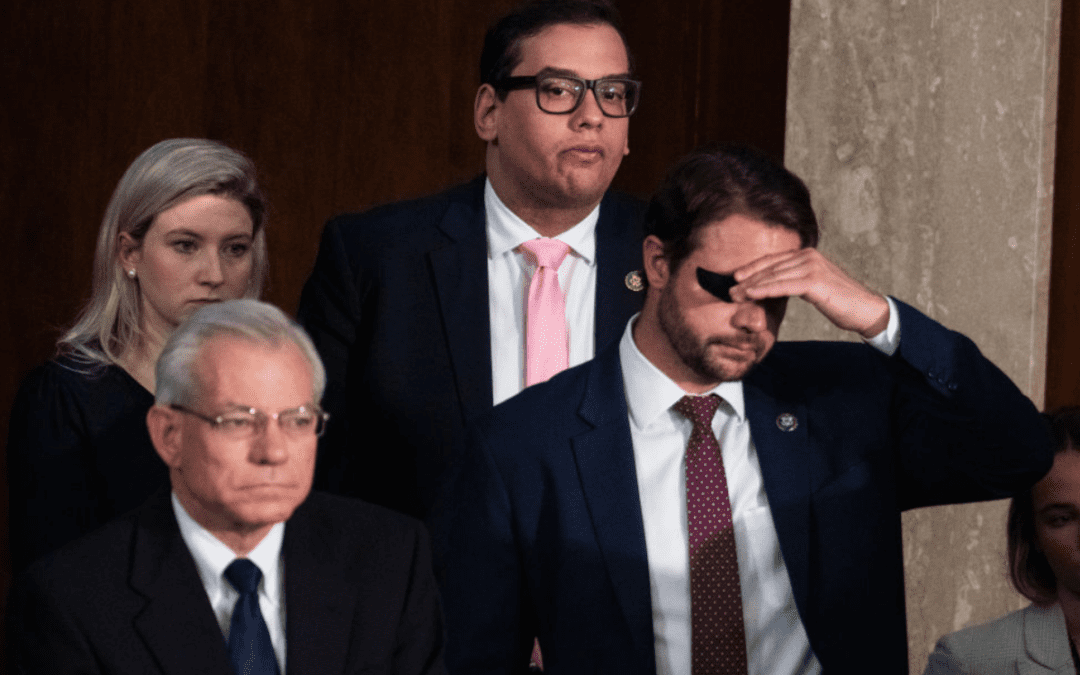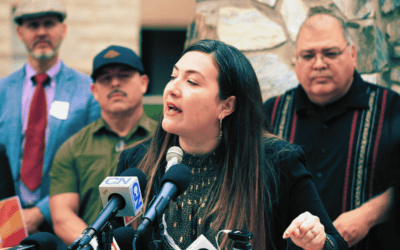
A December 2019 report urged Arizona to up unemployment to $490 per week to protect the state against a recession.
*This is part two in a series exploring how Arizona’s unemployment system was impacted by the COVID-19 pandemic. Read the full series here.
The Arizona Department of Economic Security (DES) has been hit with more than 1.3 million unemployment claims from March through the end of last month.
And while those numbers would overload any system more used to processing a few thousand claims per week, DES has been set up over the years to be unprepared for a situation like this.
Inaction on the Legislature’s part to keep benefits in line with cost of living has also left the state vulnerable to widespread economic downturn.
Here’s some insight as to where unemployment in Arizona stood before COVID-19 upended the economy and people’s lives.
History of Low Benefits
Arizona’s regular unemployment benefit is $240 per week, for 26 weeks. This is the second-lowest cap in the country, where the national average is over $300.
Legislation has also been passed in recent years to tighten eligibility and reduce the number of people who qualify for even that low amount.
While cost of living and the minimum wage have increased, unemployment has stayed the same since 2004, leaving laid-off workers with little ability to keep up on bills.
Experts warned the state that its maximum benefit was too low before the pandemic hit.
In December 2019, the Grand Canyon Institute released a report urging Arizona to up the number to $490 to protect the state against a recession.
“Arizona combines the hardest to access unemployment benefits in the country with a very low cap on benefits leaving Arizona families insufficiently protected from the next recession,” the report states.
The report also recommended:
- Introducing dependent allowance of up to $50 per week
- Lowering the minimum earnings required to qualify for benefits from $390 times the minimum wage to $260 times the minimum wage
- Removing part of state law that requires unemployment beneficiaries to accept jobs even if they “pose significant challenges in terms of travel, hours, or pay level”
Rep. Mitzi Epstein (D-Ahwatukee) is part of a coalition working to get the Legislature to approve that $490 maximum payment and the state’s “disregard” from its current $30. “That’s the amount of income you can have that the state will disregard to say, ‘Eh, pretend you didn’t have income this week,’” she explained. “And it’s such a low amount that it’s quite ridiculous. It disincentivizes people from working.”
Essentially, a person would only need to make $270 a week to be disqualified from receiving benefits.
To Epstein, it’s important to remember that unemployment payments don’t just help individuals—they help the economy as a whole.
“What I’ve found from debate on the floor and talking with various legislators is they were not very aware of the role of unemployment insurance [plays] in keeping the economy stabilized. They seem to be only aware of it as help for somebody who’s unemployed,” she said.
And legislators need to shake off the stigma and misconceptions surrounding unemployment, she said.
“[People on unemployment] want to have a job,” Epstein said. “That’s the best situation—to have a good job, to get a stable paycheck, that’s what people want.”
Budget Slashes
Epstein said while Arizona’s unemployment benefit has stayed steady, the agency overseeing it has steadily been cut down.
“This was just really bad budgeting I think on the part of past Legislatures and the governors … who have been just looking for [ways to] cut funding, cut funding, cut the budget, cut government, cut, cut, cut. And you know what? Cuts hurt,” she said. “You reach a point when you’re not just cutting away fat, you’re cutting down through the meat and the bone.”
Epstein said lack of funding has led the agency to push off updating computer systems, leaving it to deal with a mass unemployment event without the latest technology.
RELATED: Arizona’s Unemployment System Already Had Problems, the Pandemic Just Made It Worse
“If they had improved their computer systems, we might not be looking at the fraud problems we have now, and we’d certainly be delivering checks to people much better,” she said.
She also said budget cuts have led to reduced DES staffing, meaning fewer people to work on claims and answer phones. The agency is currently promoting open jobs for call center workers to help with unemployment.
“It’s time to fix these things, and these budget cuts that have happened year after year after decade after decade have led us to this triple whammy of problems with the pandemic and the economy,” Epstein said. “You can’t just year after year say you’ve cut the budget … and then pat yourself on the back for doing good things when you’re completely ignoring the long-term effects of all those budget cuts.”
Tumultuous Leadership
Critics of the agency’s pandemic response have also pointed to its tumultuous leadership history as a sign of disorganization.
Former director Tim Jeffries was fired in 2016 due to multiple scandals, including mass firings and a party in which he allegedly purchased alcohol for employees. After his firing, the Department of Public Safety discovered a weapons cache including 50 guns and 80,000 rounds of ammunition in the agency’s basement.
Henry Darwin was then appointed interim director and replaced by former Department of Housing Director Michael Trailor after six months. Trailer resigned two years later.
At the beginning of the pandemic, Dr. Cara Christ was serving as the interim director. If her name sounds familiar, that’s because she’s also the head of the Arizona Department of Health Services, the agency tasked with running the state’s pandemic response.
After the public raised concerns over the state having the same person run both departments, especially in a time of crisis, Gov. Doug Ducey appointed former Arizona Health Care Cost Containment System (AHCCCS) Director Tom Betlach as the interim director toward the end of March.
Then about two months later, on May 28, Ducey named Michael Wisehart as Betlach’s replacement.
Epstein said that commotion at all levels of the agency is actually creating a good opportunity to drum up the support needed to make changes.
“Now is a great opportunity to work on unemployment insurance reform because now it’s in the news, people know about it,” she said. “Everybody knows somebody who is on unemployment insurance.”
Support Our Cause
Thank you for taking the time to read our work. Before you go, we hope you'll consider supporting our values-driven journalism, which has always strived to make clear what's really at stake for Arizonans and our future.
Since day one, our goal here at The Copper Courier has always been to empower people across the state with fact-based news and information. We believe that when people are armed with knowledge about what's happening in their local, state, and federal governments—including who is working on their behalf and who is actively trying to block efforts aimed at improving the daily lives of Arizona families—they will be inspired to become civically engaged.


He said what? 10 things to know about RFK Jr.
The Kennedy family has long been considered “Democratic royalty.” But Robert F. Kennedy, Jr.—son of Robert F. Kennedy, who was assassinated while...

Here’s everything you need to know about this month’s Mercury retrograde
Does everything in your life feel a little more chaotic than usual? Or do you feel like misunderstandings are cropping up more frequently than they...

Arizona expects to be back at the center of election attacks. Its officials are going on offense
Republican Richer and Democrat Fontes are taking more aggressive steps than ever to rebuild trust with voters, knock down disinformation, and...

George Santos’ former treasurer running attack ads in Arizona with Dem-sounding PAC name
An unregistered, Republican-run political action committee from Texas with a deceptively Democratic name and ties to disgraced US Rep. George Santos...





